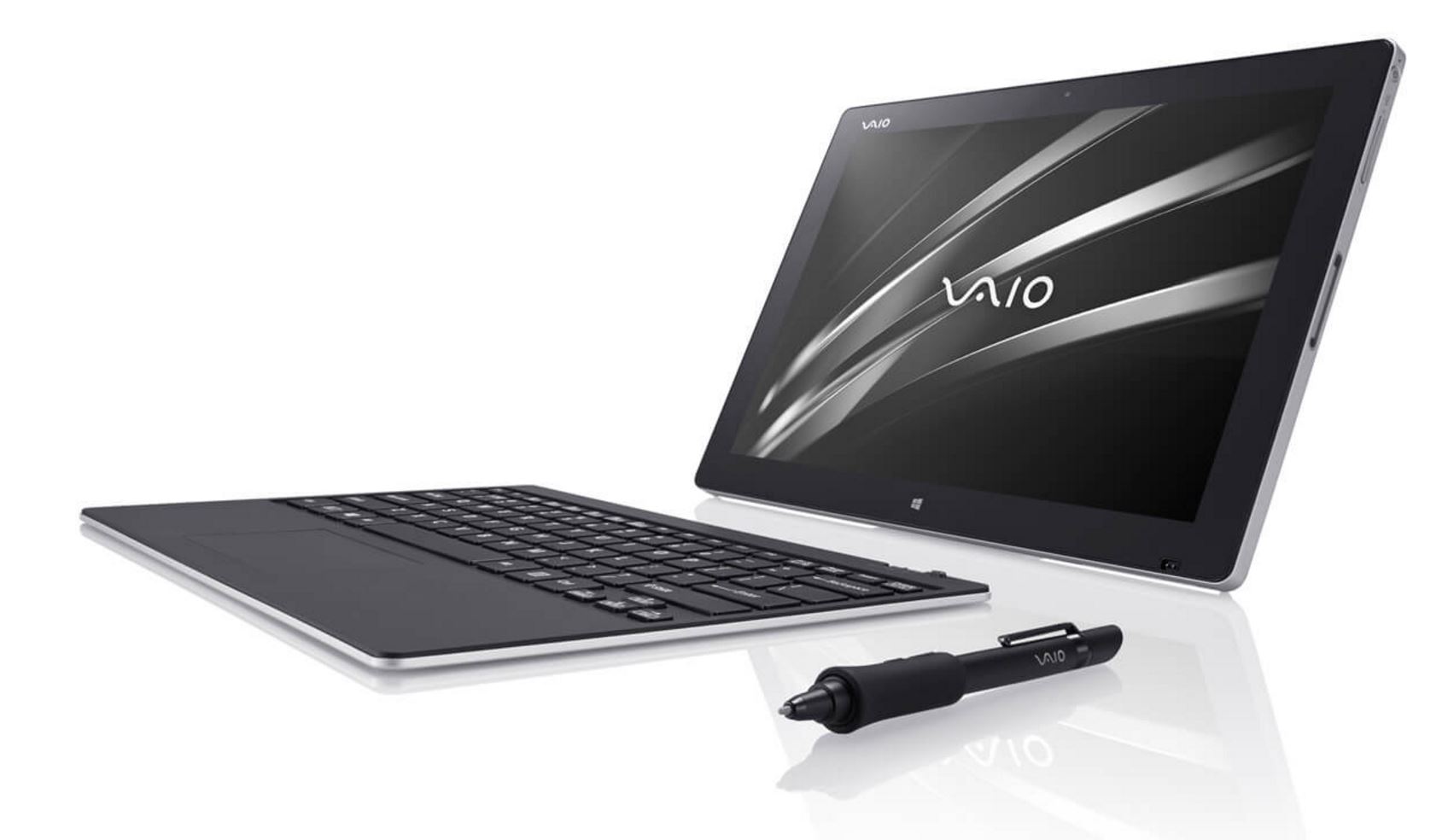If there were any doubt, 2016 is the year of the hybrid tablet PC. Microsoft has been leading the way for quite some time, with a long term investment that started in 2012, with the first iteration of the Surface tablet. The device did not fare very well in a market that was very much bound to the traditional desktop tower paradigm, however, that changed quickly, to a point where desktop-class CPUs and GPUs could be integrated in devices the size of the original iPad.

In 2016, the tablet market is on fire, with thin and light devices capable of up to 10 hours of battery life, and able to run the full desktop version of Windows 10, many times faster than a four years old desktop PC.
Now, we have more manufacturers sold to the idea of a hybrid Windows 10 tablet, and looking to compete with Microsoft for a spot in this new category’s pantheon.

VAIO is not the first early adopter of the concept of a slate tablet PC running Windows 10, in fact Lenovo ThinkPad Yoga, and Fujitsu T940 Lifebook, have been trendsetting in the wake of the success of the Surface lineup. With that said, the VAIO Z Canvas is by all means the ultimate Surface Pro 4 competitor, in both looks and user experience.
Size and weight: Surface Pro 4
The VAIO Canvas is a 12.3 inch tablet with a detached keyboard and a stylus pen, whose design mimics the Surface Pro almost identically. At 2.67 pounds, the VAIO is almost a full pound heavier than the 1.76lb Surface Pro 4, although it’s still lightweight enough for that extra pound to make little difference when using it on a daily basis.
Processing performance and display: Surface Pro 4
Both the VAIO Z Canvas and the Surface Pro support the sixth generation Intel Core i7 processor, and both can be upgraded to 3.4GHz, with Intel Turbo Boost.
RAM support for both tablets, as it’s expected on most devices in this category, goes up to 16GB, however, it’s worth noting that RAM in both tablets is integrated onto the mainboard, which means it cannot be upgraded, which should be an important thing to keep in mind when purchasing either devices.
Just like the Surface Pro 4, the VAIO Z Canvas integrates an Intel Iris Graphics GPU, however, the Surface Pro 4 features a higher resolution 2736 x 1824 pixels touchscreen than the 2560 x 1704 on the VAIO Z Canvas, although it’s unlikely that a little over 100 pixels will make a difference for most users.
Storage capacity: Surface Pro 4
The storage options on the VAIO are a little different than the Surface Pro 4. While the Surface Pro 4 offers 128GB, 256GB, 512GB and 1TB, the VAIO Z Canvas starts with a 256GB, which can be upgraded to 512, and 1TB, however, the 1TB option is not exactly a 1TB drive, but rather two 512GB SSD’s.
Ports: VAIO Z Canvas
The Surface Pro 4 integrates one USB 3.0 port, while the VAIO Z Canvas features two USB 3.0 ports, one of which can be used to recharge the tablet.
The VAIO also features one HDMI port, and a mini DisplayPort output, as well as a LAN port for wired network communication. By comparison, the Surface Pro 4 doesn’t have an HDMI port, but it features a Surface Connect port, which can be used to expand the number of ports, by connecting it to a Surface Dock, which allows to connect to up to two 4K displays, and four USB accessories and peripherals.
With that said, by number of native ports, the VAIO Z Canvas has the upper hand for having an HDMI port can can be used to connect to an external display or a smart TV.
Wireless connectivity: VAIO Z Canvas
While both devices integrate 802.11 WPA2 compatible Wi-Fi, as well as Bluetooth, the Surface Pro 4’s Wi-Fi on the Surface Pro 4 supports only a/b/g/n, as well as Bluetooth 4.0, while the VAIO Z Canvas supports a/b/g/n/ac, and Bluetooth 4.1.
Multimedia: Tie
Both the Canvas and the Surface Pro 4 feature HD audio, a 5MP front facing HD camera, and a rear-facing 8MP HD camera, with HD audio recording capability,
Battery life: Surface Pro 4
On paper, both VAIO and Surface Pro 4 offer similar specs, in the range of 9 hours of continuous video playback, however, expecting 9 hours out of a mobile device is not realistic, considering that battery life will be affected in different ways, depending on apps used and settings. With that said, Battery life on the Surface Pro 4 seems to fare a bit better than the VAIO Z Canvas, if anything by a small margin.
Stylus: Surface Pro 4
The stylus on the Surface Pro 4 provides a much smoother experience than most other devices on the market, sitting right behind the Apple Pencil, as the second best stylus on a portable device. With that said, the VAIO Z Canvas offers a discrete experience as well, but definitely not as smooth and responsive as the Surface Pen.
The Winner: Surface Pro 4
The VAIO Z Canvas is an amazing tablet PC, with a powerful processor, and nearly identical specs as the Surface Pro 4, however Microsoft’s flagship tablet leverages the experience in a number of ways, such as offering more flexible storage options, a better stylus experience, and a slightly higher resolution. The VAIO Z Canvas is also almost a full pound heavier than the Surface Pro 4, which might make a difference, ever so slight, when comparing both devices in the long run.